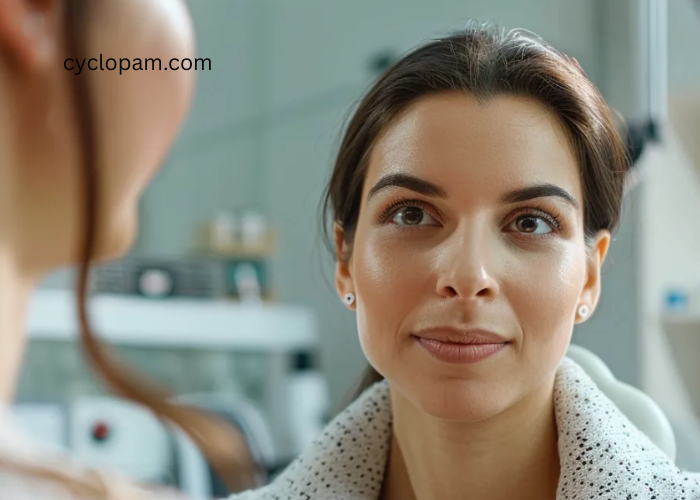With the quest for youthful skin being more prevalent than ever, Botox has emerged as a leading anti-aging solution. Esteemed for its ability to smooth wrinkles and ease the signs of aging, Botox is revered in cosmetic communities globally. Clinically referred to as Botulinum toxin, its applications in dermatology have witnessed exponential growth. As individuals navigate the wealth of information on anti-aging treatments, understanding Botox’s efficacy is integral. Below, we delve into the complexities of Botox, exploring its benefits, science, and how it stacks up against other anti-aging therapies.
Understanding Botox and Its Role in Anti-Aging
Botox is not just a cosmetic product; it’s a neurotoxic protein that, when used in small dosages, can provide significant benefits in reducing the appearance of aging. Its administration is typically through injections that target specific facial muscles. Temporarily paralyzing these muscles prevents the deepening of wrinkles and lines caused by expressions such as frowning or smiling.
The treatment’s appeal lies in its non-invasive nature coupled with its relatively swift results. After a session, patients often report seeing improvements within a few days. The convenience of Botox, allowing patients to return to daily activities almost immediately, adds to its popularity as an anti-aging strategy.
In the aesthetic realm, practitioners from Botox Marin County, CA, tailor procedures to each individual, ensuring subtle enhancements. The goal is not just to reverse signs of aging but to maintain a natural and refreshed look that aligns with the patient’s features and desires.
The Longevity of Botox Results and Maintenance Tips
One of the most commonly asked questions about Botox pertains to its longevity. Typically, the effects of Botox can last anywhere from three to six months. Several factors influence this duration, including the individual’s lifestyle, the area treated, and muscle strength. The repetitive nature of treatments tends to prolong the effects over time, with some patients noticing longer-lasting results with consistent use.
Maintenance of Botox’s effects requires a strategic approach. Following post-treatment guidelines, like avoiding strenuous exercise and extensive sun exposure immediately after the procedure, can enhance longevity. Moreover, scheduling regular follow-up appointments allows for the fine-tuning of treatments to maintain desired results.
While the immediate aftercare post-botox is minimal, long-term skin care plays a significant role in supporting the anti-aging benefits. Incorporating a regimen that includes sunscreen, moisturizers, and other skin-nourishing products can enhance overall skin health, contributing to the youthfulness that Botox seeks to preserve.
Botox and Skin Health: Beyond Cosmetic Improvements
While the aesthetic benefits of Botox are widely acknowledged, its impact on skin health is also noteworthy. Regular Botox use has been associated with improved skin texture and quality. The decreased frequency of muscle contractions not only minimizes the deepening of wrinkles but may also contribute to a more refined skin surface over time.
This modification to the skin’s appearance is coupled with the mental and emotional uplift patients often report. Feeling more confident about one’s appearance can lead to reduced stress, which can indirectly benefit skin health. The interconnectedness of physical appearance and mental well-being is a critical aspect of Botox treatments overlooked by those who dismiss it as a purely cosmetic procedure.
Furthermore, Botox’s use in treating conditions such as hyperhidrosis showcases its medical benefits beyond skin appearance. By addressing excessive sweating, Botox demonstrates its ability to enhance the quality of life for patients struggling with more than just wrinkles. Its therapeutic potential continues to expand as more uses are discovered and researched.
Comparing Botox to Other Anti-Aging Treatments and Therapies
When juxtaposed with alternative anti-aging treatments, Botox holds a distinctive place due to its nonsurgical approach and quick visible results. Other non-invasive procedures like fillers, chemical peels, and laser therapies target different skin concerns and may be combined with Botox for comprehensive anti-aging strategies.
Fillers, unlike Botox, which relaxes muscles, aim to restore volume loss and provide immediate fullness to areas like the cheeks and lips. On the other hand, chemical peels focus on exfoliating the skin to reveal a fresher layer, potentially improving texture and tone. Laser therapies can address pigmentation and promote collagen production for firmer skin.
Altogether, understanding Botox and its applications in anti-aging serves as a gateway to exploring modern cosmetic treatments. Whether opting for Botox or considering other therapies, embracing a well-rounded approach to skin health and aging is the key to achieving and maintaining a youthful appearance. Overall, well-informed choices coupled with a trusted provider can pave the way for successful anti-aging outcomes.
